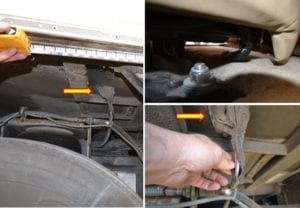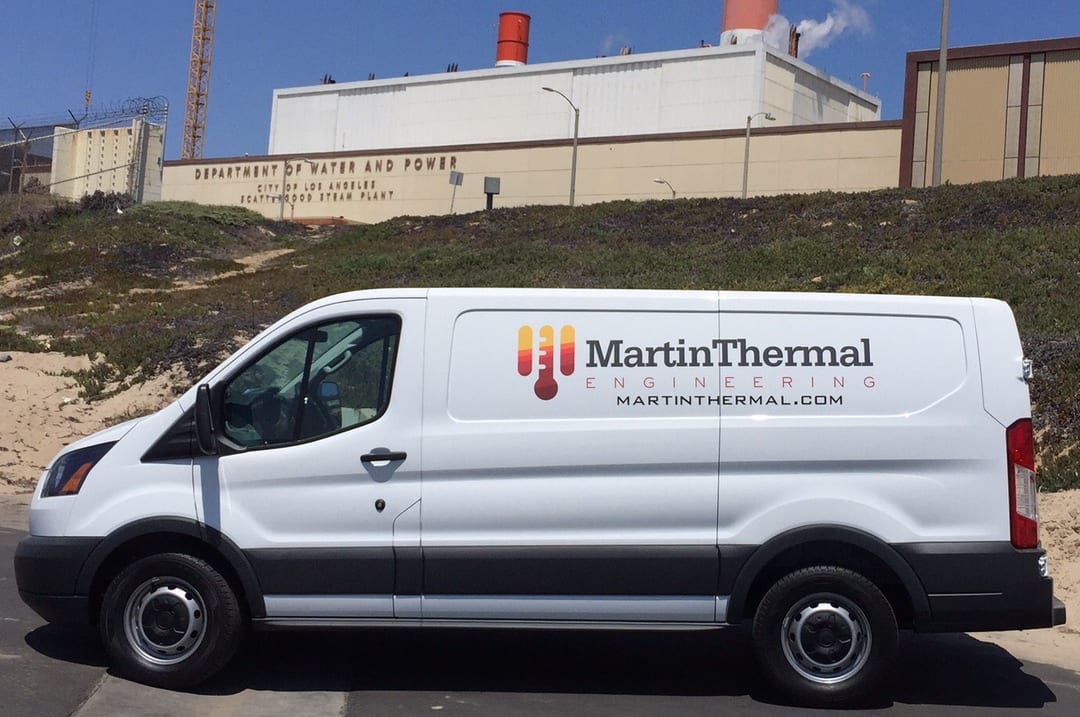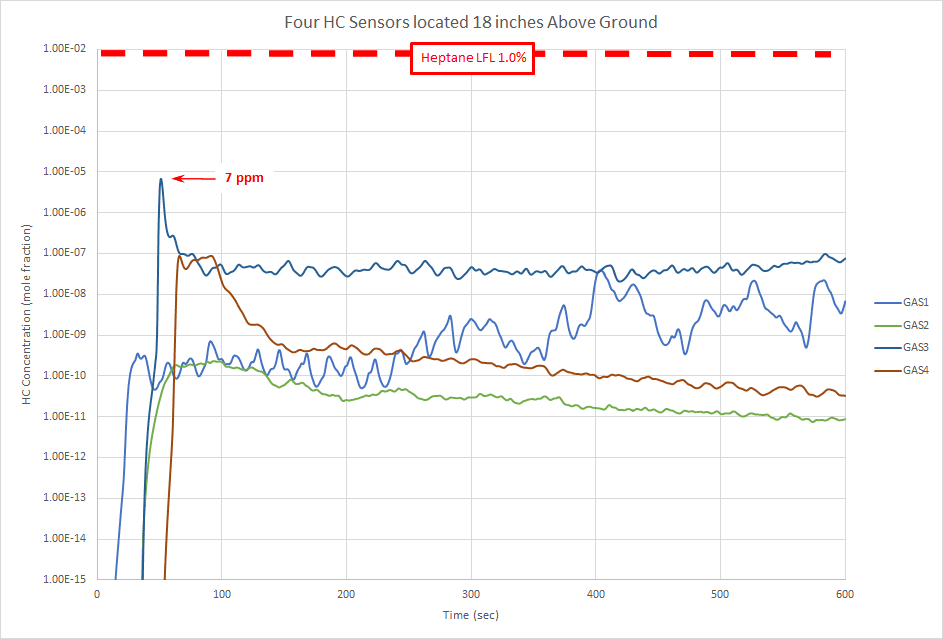As farfetched as it sounds, this author investigated a Recreational Vehicle (RV) fire where the cause was tire failure. Consider these facts:
- RV being operated on highway when right-front tire blew out.
- Driver pulled over to right side of highway.
- Witnesses photographed active fire at right-front corner of RV.
- Fire damage to RV included near-complete melting of right-front aluminum wheel hub, with zero melting of the other five aluminum hubs.
- Burn patterns on RV exterior indicated a low point of burning at right-front wheel well, and V-like patterns rising upward and spreading outward from there.
While the facts above are fully consistent with a fire origin at or near the right front wheel well, and no other origin location would be equally consistent, the evidence above fails to provide direct evidence of any fire causation mechanism. To discover the cause of the fire, our team found and inspected an exemplar RV of the same make and model and discovered an entirely new set of facts about the RV design – none of which survived the fire. Consider the inset photo below and the following additional facts:
- Several sources of combustible plastic and rubber were present inside the wheel well.
- A set of four conductors (two of which were 10 AWG solid copper wire) inside a plastic wire loom was run through the wheel well.
- The heavy-gauge wires provided power to the front passenger seat adjustment motor and were energized whenever the ignition key was in run or accessory mode.
- The wire loom and wires were a few inches above the tire’s upper surface and a few inches inward from the tire’s inward edge.
- When a rotating tire fails, elements of steel belting can partially disengage and whip around repeatedly at high speed, impacting softer materials within their reach.
Thus, after inspecting the exemplar, our team was able to supplement the burn pattern information with design information that confirmed a source of ignition (energized conductors with contemporaneously-damaged insulation) with several sources of fuel (plastic, rubber and plywood) in the area of origin. Our causation scenario was the only hypothesis under consideration that was fully consistent with all of the facts – tire failure, followed by steel-belt whipping and damaging energized conductors, followed by ignition of nearby combustible plastics, followed by fire spread to right-front corner of RV structure.
The purpose of “Investigation Anecdotes” is to inform our readers about the intriguing field of engineering investigations. We hope you are instructed by this content, and we encourage you to contact us if you seek additional information.


 A relatively common cause of vehicle fires is the unsafe installation of aftermarket electrical appliances, and this author has investigated many such incidents. While many third-party audio/video systems are installed with kits that are engineered to work flawlessly in conjunction with the vehicle’s original wiring, some are not meant for automobile installation at all. The biggest problems are (a) devices that consume too much power, (b) use of wiring that is improperly sized or inadequately safeguarded against excess current, and (c) installation of wiring in locations that are insufficiently protected and susceptible to insulation damage.
A relatively common cause of vehicle fires is the unsafe installation of aftermarket electrical appliances, and this author has investigated many such incidents. While many third-party audio/video systems are installed with kits that are engineered to work flawlessly in conjunction with the vehicle’s original wiring, some are not meant for automobile installation at all. The biggest problems are (a) devices that consume too much power, (b) use of wiring that is improperly sized or inadequately safeguarded against excess current, and (c) installation of wiring in locations that are insufficiently protected and susceptible to insulation damage. Not surprisingly, the other common feature in each of these fire incidents was inadequate overcurrent protection. In one case, there was no fuse installed anywhere in the circuit. In the second case, the fuse was installed on the wrong leg (neutral instead of hot). And in the third case, a fuse was present, but its rating was too high to protect the conductor from overheating.
Not surprisingly, the other common feature in each of these fire incidents was inadequate overcurrent protection. In one case, there was no fuse installed anywhere in the circuit. In the second case, the fuse was installed on the wrong leg (neutral instead of hot). And in the third case, a fuse was present, but its rating was too high to protect the conductor from overheating.